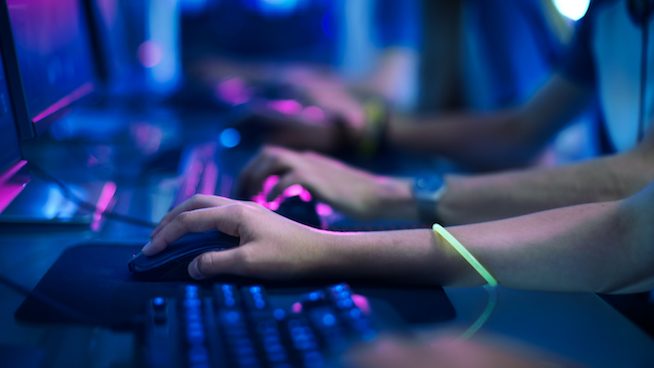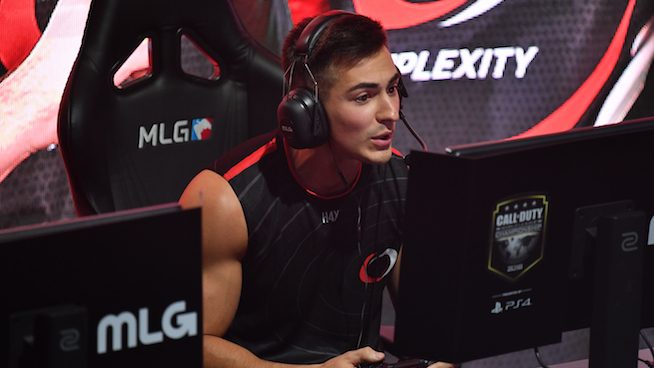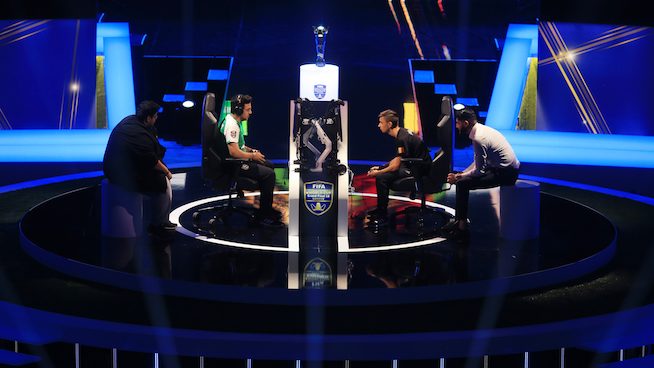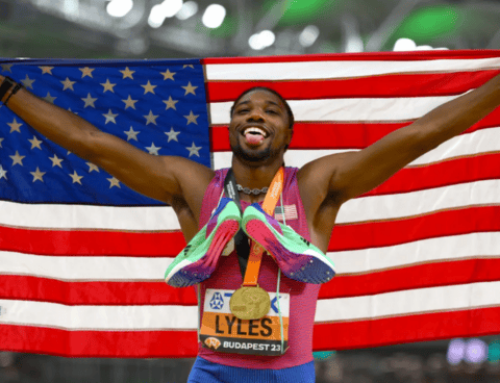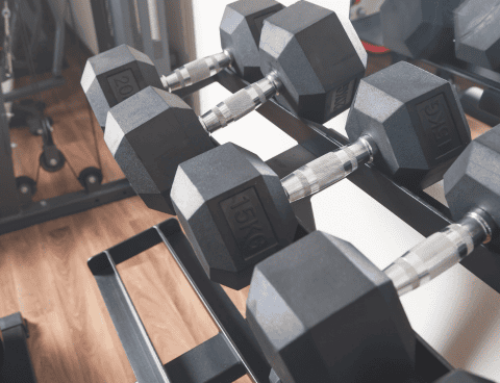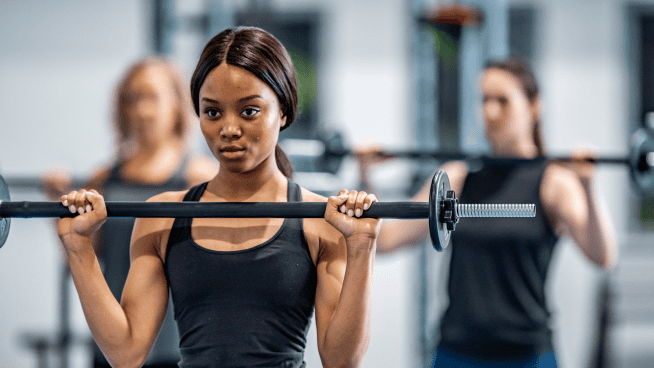Opposites Attract: Why eSports Athletes Benefit From Strength Training
You’re wasting your time. Go outside and play. You’re being anti-social, go interact with people in person.
If anyone has played video games for an extended period growing up, you’ve probably heard your parents, friends or family utter those very lines in your direction. Well, if you haven’t heard yet, being a gamer can now be a career. Thanks to the rise of e-sports leagues, there are now professional gamers who make well over $100,000 a year.
According to the market analyst group Newzoo, the global market value for e-sports is expected to top 900 million dollars in 2018, and there are estimated to be well over 200 million e-sports fans worldwide. The National Basketball Association has launched its own 17 team e-sports “NBA 2K” league. Soon, we will have the top “gamers” training their bodies and minds like elite athletes and fighter pilots.
In the early 1980s, it was widely believed that strength training could not improve a batter’s ability to make contact with a pitch. It was also said that strength training would ruin a pitcher’s arm and do nothing for their velocity.
In the late 1980s, it was said that strength training would ruin a basketball player’s shot. The logic followed that if a basketball player lifted weights, they would get too bulky and tight, therefore throwing off their shooting form.
In the late 1990s, many people did not even consider golfers to be athletes. Golf was considered a game of recreation that required a practiced swing, soft touch on and around the greens, and superior hand-eye coordination. Strength training was believed to be detrimental to golfers.
Athletes like Michael Jordan, Barry Bonds, Tiger Woods, LeBron James, Bryce Harper and Brooks Koepka have helped shatter these stereotypes, proving that basketball, baseball and golf athletes can experience tremendous benefit from strength training for their sport. It’s funny to look back on the ridiculous notions that strength training was not beneficial for those sports, and the ones who ignored those notions and adopted strength training early received a significant competitive advantage.
While strength training for e-sports athletes may sound outlandish now, I believe in 10 years, it will be common practice.
Strength training and a wellness regimen has countless benefits for all individuals, especially e-sport gamers. There’s more research coming out that links strength training, proper nutrition and sleep/rest to improved brain cognitive activity, increased blood flow, faster brain processing speed, improved memory and improved reaction times.
Moreover, many e-sports players are at an age (teens and early adulthood) when mental health issues such as depression and anxiety begin to manifest. Consistent physical activity has been proven to help improve mental health and overcome the associated symptoms that may effect an individual’s ability to perform.
Dedicated amateur and professional gamers also spend countless hours inside and away from sunlight, which deprives them of vitamin D and can increase the likelihood of experiencing depression. Exercise, physical activity and strength training has been shown to help reduce the risk of depression and other mental disorders.
When a strength coach is designing a program for their team or athletes, they must first perform a needs analysis. What are the team and athlete’s goals, what are their needs, and what are potential problem areas for the sport that can be addressed through training?
Below are three areas of need that all e-sports players should focus on. Through the use of a well-designed strength training program, they will play, compete and live at a higher level.
1. Strength Training Will Improve Posture
E-sports players sit hunched over in front of monitors for large portions of the day.
In this position, their neck is likely craned in front of their chest, their shoulders are likely rolled forward and up toward their ears, their hands are in front of them, and they’re likely bent forward at the pelvis with a rounded back. It’s a position many of us assume during our daily routines, whether we’re driving a car, working on a laptop, or staring down at a smartphone.
Over time, this hunched position tightens the muscles on the front of the body (e.g., the hip flexors and chest) and lengthens the muscles on the back of your body (e.g., the upper back), creating a common posture problem known as anterior dominance.
Having proper posture can improve the player’s performance in a multitude of ways. By improving your posture, you open up your body to better oxygen and blood circulation, meaning that you’ll also improve your ability to concentrate and focus.
Research conducted by San Francisco State University revealed that altering body posture to a more upright position can improve mood and energy levels. Your posture has measurable effects on your optimism, energy and even mood.
To improve posture, e-sports players should incorporate pulling exercises like Chin-Ups, Pull-Ups, Rows, Pulldowns and Band Pull-Aparts. This will help fight anterior dominance by improving upper back and shoulder strength, helping e-sport players achieve healthier posture.
A stronger core will also help e-sports players improve their posture. Some great exercises for improved core strength are Three-Way Planks, Hip Thrusters, Dead Bugs, Bird Dogs, Pallof Presses and Barbell Rollouts.
2. Better Grip Strength and Dexterity
Improved grip strength can offer a slew of benefits for gamers.
Namely, better grip strength has been shown to be associated with better dexterity. A 2015 study published in the journal PLOS One concluded that “present research showed that age and grip strength were all statistically significant predictors of hand dexterity, and that aiming and tapping hand dexterity (involving rapid, coordinated, goal directed actions) appeared to be moderated by the factor of grip strength more than age.” For gamers who need to hit buttons as quickly and as precisely as possible, this can be a big advantage.
Additionally, many e-sports players battle carpel tunnel syndrome due to the demands of their activity. Almost all strength training can improve grip strength, which may in turn reduce the likelihood and effects of overuse injuries like carpel tunnel syndrome.
When performing an exercise with a barbell or dumbbell, the individual is also indirectly improving his/her grip strength. Deadlifts, RDLs, Bench Press, Curls, Chin-Ups and Pull-Ups are all great exercises to improve overall strength as well as grip strength. Esports players can also improve their grip strength through squeezing a tennis ball, and this article outlines some other excellent grip-strengthening options.
3. Improved Stamina
Fatigue negatively affects decision making and reaction time. Studies have shown that as the body becomes fatigued, cognitive brain function slows down. As cognitive activity slows down, so does reaction time and the individual’s ability to process information. This can obviously hinder a gamer’s performance during the heat of competition.
Conditioning protocols have evolved over the years for athletes of different sports. In the past, when coaches and athletes thought of conditioning, they thought of long-distance training. For example, running a mile for time. As conditioning protocols have changed, we have learned that we should train the athlete for the specific demands of their sport. We now understand that an American football player does not need to run a mile at one time for conditioning, because the demands of American football do not require continuous activity for more than 5-10 seconds.
As mentioned earlier, e-sports players often game for 6, 8, 10 hours at once. Moreover, e-sports players are expected to have fast reaction times and strong cognitive activity, even after having played for several hours and being fatigued. During the sixth, eighth or 10th hour is often when games are actually won and lost, and thus the better conditioned gamer often wins! For that reason, gamers’ conditioning protocols should prepare them for the endurance demands of their games and sport.
This is why all e-sports players should participate in “brain endurance” conditioning. This involves slow, long-distance walking or lightly riding on a stationary bike, while completing a cognitive task during the conditioning exercise. The cognitive task could be a crossword puzzle, Sudoku or any other game that requires fast reactions and focus—even the game they compete in. This way, the gamer is improving his/her cardiovascular work capacity while also challenging their mind when fatigued. A UK Ministry of Defense study found that soldiers who used “brain endurance conditioning” improved their “time to exhaustion” by 126 percent compared to just 42 percent for the soldiers who engaged in the same conditioning program but did not participate in a mentally demanding task while doing so.
Strength training will significantly improve an e-sports player’s performance. If you are serious about competing at the highest level in e-sports, you need to take your health and wellness seriously. There was a time when strength training for basketball, baseball and golf was looked at as unimportant or even detrimental. Times have changed. Anyone who is serious about competing at the highest level in e-sports should embrace all of the benefits of improved health and performance that strength and conditioning offers.
Micah Kurtz was named the 2016 National Strength Coach of the Year by the NSCA. In 2018, he was named a Top 40 under 40 Sports Professional by the National High School Athletic Coaches Association. He has recently begun the position of Assistant Athletics Director/ Director of Strength, Conditioning & Athletic Development at Windermere Preparatory School (Lake Butler, Florida). Previously, he was the Director of Strength and Conditioning at AC Flora high school (Forest Acres, South Carolina). During his time there, AC Flora won 14 state championships and was named the #1 athletic program of the year by The State newspaper in both 2014 and 2015.
This article was co-authored by Lucas Kurtz. Lucas is the Vice President of Legal Affairs for US Sugar and is passionate about helping students maximize their full athletic, academic and professional potential. He played free safety and was a captain of the SUNY Albany football team, where he won two conference titles. He also played and coached professional football for the Corinthians football club in São Paulo, Brazil. He’s currently an active writer and has delivered speeches and presentations throughout the United States, Brazil and China.
Photo Credit: Jamie Sabau/Getty Images, gorodenkoff/iStock, Ben Hoskins/iStock
READ MORE:
RECOMMENDED FOR YOU
MOST POPULAR
Opposites Attract: Why eSports Athletes Benefit From Strength Training
You’re wasting your time. Go outside and play. You’re being anti-social, go interact with people in person.
If anyone has played video games for an extended period growing up, you’ve probably heard your parents, friends or family utter those very lines in your direction. Well, if you haven’t heard yet, being a gamer can now be a career. Thanks to the rise of e-sports leagues, there are now professional gamers who make well over $100,000 a year.
According to the market analyst group Newzoo, the global market value for e-sports is expected to top 900 million dollars in 2018, and there are estimated to be well over 200 million e-sports fans worldwide. The National Basketball Association has launched its own 17 team e-sports “NBA 2K” league. Soon, we will have the top “gamers” training their bodies and minds like elite athletes and fighter pilots.
In the early 1980s, it was widely believed that strength training could not improve a batter’s ability to make contact with a pitch. It was also said that strength training would ruin a pitcher’s arm and do nothing for their velocity.
In the late 1980s, it was said that strength training would ruin a basketball player’s shot. The logic followed that if a basketball player lifted weights, they would get too bulky and tight, therefore throwing off their shooting form.
In the late 1990s, many people did not even consider golfers to be athletes. Golf was considered a game of recreation that required a practiced swing, soft touch on and around the greens, and superior hand-eye coordination. Strength training was believed to be detrimental to golfers.
Athletes like Michael Jordan, Barry Bonds, Tiger Woods, LeBron James, Bryce Harper and Brooks Koepka have helped shatter these stereotypes, proving that basketball, baseball and golf athletes can experience tremendous benefit from strength training for their sport. It’s funny to look back on the ridiculous notions that strength training was not beneficial for those sports, and the ones who ignored those notions and adopted strength training early received a significant competitive advantage.
While strength training for e-sports athletes may sound outlandish now, I believe in 10 years, it will be common practice.
Strength training and a wellness regimen has countless benefits for all individuals, especially e-sport gamers. There’s more research coming out that links strength training, proper nutrition and sleep/rest to improved brain cognitive activity, increased blood flow, faster brain processing speed, improved memory and improved reaction times.
Moreover, many e-sports players are at an age (teens and early adulthood) when mental health issues such as depression and anxiety begin to manifest. Consistent physical activity has been proven to help improve mental health and overcome the associated symptoms that may effect an individual’s ability to perform.
Dedicated amateur and professional gamers also spend countless hours inside and away from sunlight, which deprives them of vitamin D and can increase the likelihood of experiencing depression. Exercise, physical activity and strength training has been shown to help reduce the risk of depression and other mental disorders.
When a strength coach is designing a program for their team or athletes, they must first perform a needs analysis. What are the team and athlete’s goals, what are their needs, and what are potential problem areas for the sport that can be addressed through training?
Below are three areas of need that all e-sports players should focus on. Through the use of a well-designed strength training program, they will play, compete and live at a higher level.
1. Strength Training Will Improve Posture
E-sports players sit hunched over in front of monitors for large portions of the day.
In this position, their neck is likely craned in front of their chest, their shoulders are likely rolled forward and up toward their ears, their hands are in front of them, and they’re likely bent forward at the pelvis with a rounded back. It’s a position many of us assume during our daily routines, whether we’re driving a car, working on a laptop, or staring down at a smartphone.
Over time, this hunched position tightens the muscles on the front of the body (e.g., the hip flexors and chest) and lengthens the muscles on the back of your body (e.g., the upper back), creating a common posture problem known as anterior dominance.
Having proper posture can improve the player’s performance in a multitude of ways. By improving your posture, you open up your body to better oxygen and blood circulation, meaning that you’ll also improve your ability to concentrate and focus.
Research conducted by San Francisco State University revealed that altering body posture to a more upright position can improve mood and energy levels. Your posture has measurable effects on your optimism, energy and even mood.
To improve posture, e-sports players should incorporate pulling exercises like Chin-Ups, Pull-Ups, Rows, Pulldowns and Band Pull-Aparts. This will help fight anterior dominance by improving upper back and shoulder strength, helping e-sport players achieve healthier posture.
A stronger core will also help e-sports players improve their posture. Some great exercises for improved core strength are Three-Way Planks, Hip Thrusters, Dead Bugs, Bird Dogs, Pallof Presses and Barbell Rollouts.
2. Better Grip Strength and Dexterity
Improved grip strength can offer a slew of benefits for gamers.
Namely, better grip strength has been shown to be associated with better dexterity. A 2015 study published in the journal PLOS One concluded that “present research showed that age and grip strength were all statistically significant predictors of hand dexterity, and that aiming and tapping hand dexterity (involving rapid, coordinated, goal directed actions) appeared to be moderated by the factor of grip strength more than age.” For gamers who need to hit buttons as quickly and as precisely as possible, this can be a big advantage.
Additionally, many e-sports players battle carpel tunnel syndrome due to the demands of their activity. Almost all strength training can improve grip strength, which may in turn reduce the likelihood and effects of overuse injuries like carpel tunnel syndrome.
When performing an exercise with a barbell or dumbbell, the individual is also indirectly improving his/her grip strength. Deadlifts, RDLs, Bench Press, Curls, Chin-Ups and Pull-Ups are all great exercises to improve overall strength as well as grip strength. Esports players can also improve their grip strength through squeezing a tennis ball, and this article outlines some other excellent grip-strengthening options.
3. Improved Stamina
Fatigue negatively affects decision making and reaction time. Studies have shown that as the body becomes fatigued, cognitive brain function slows down. As cognitive activity slows down, so does reaction time and the individual’s ability to process information. This can obviously hinder a gamer’s performance during the heat of competition.
Conditioning protocols have evolved over the years for athletes of different sports. In the past, when coaches and athletes thought of conditioning, they thought of long-distance training. For example, running a mile for time. As conditioning protocols have changed, we have learned that we should train the athlete for the specific demands of their sport. We now understand that an American football player does not need to run a mile at one time for conditioning, because the demands of American football do not require continuous activity for more than 5-10 seconds.
As mentioned earlier, e-sports players often game for 6, 8, 10 hours at once. Moreover, e-sports players are expected to have fast reaction times and strong cognitive activity, even after having played for several hours and being fatigued. During the sixth, eighth or 10th hour is often when games are actually won and lost, and thus the better conditioned gamer often wins! For that reason, gamers’ conditioning protocols should prepare them for the endurance demands of their games and sport.
This is why all e-sports players should participate in “brain endurance” conditioning. This involves slow, long-distance walking or lightly riding on a stationary bike, while completing a cognitive task during the conditioning exercise. The cognitive task could be a crossword puzzle, Sudoku or any other game that requires fast reactions and focus—even the game they compete in. This way, the gamer is improving his/her cardiovascular work capacity while also challenging their mind when fatigued. A UK Ministry of Defense study found that soldiers who used “brain endurance conditioning” improved their “time to exhaustion” by 126 percent compared to just 42 percent for the soldiers who engaged in the same conditioning program but did not participate in a mentally demanding task while doing so.
Strength training will significantly improve an e-sports player’s performance. If you are serious about competing at the highest level in e-sports, you need to take your health and wellness seriously. There was a time when strength training for basketball, baseball and golf was looked at as unimportant or even detrimental. Times have changed. Anyone who is serious about competing at the highest level in e-sports should embrace all of the benefits of improved health and performance that strength and conditioning offers.
Micah Kurtz was named the 2016 National Strength Coach of the Year by the NSCA. In 2018, he was named a Top 40 under 40 Sports Professional by the National High School Athletic Coaches Association. He has recently begun the position of Assistant Athletics Director/ Director of Strength, Conditioning & Athletic Development at Windermere Preparatory School (Lake Butler, Florida). Previously, he was the Director of Strength and Conditioning at AC Flora high school (Forest Acres, South Carolina). During his time there, AC Flora won 14 state championships and was named the #1 athletic program of the year by The State newspaper in both 2014 and 2015.
This article was co-authored by Lucas Kurtz. Lucas is the Vice President of Legal Affairs for US Sugar and is passionate about helping students maximize their full athletic, academic and professional potential. He played free safety and was a captain of the SUNY Albany football team, where he won two conference titles. He also played and coached professional football for the Corinthians football club in São Paulo, Brazil. He’s currently an active writer and has delivered speeches and presentations throughout the United States, Brazil and China.
Photo Credit: Jamie Sabau/Getty Images, gorodenkoff/iStock, Ben Hoskins/iStock
READ MORE:

